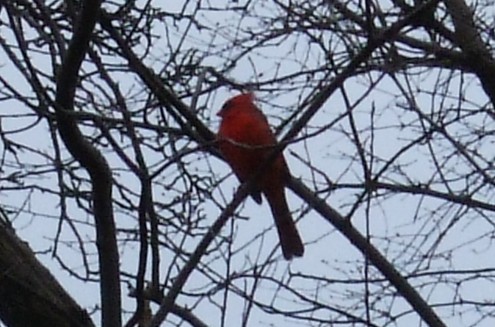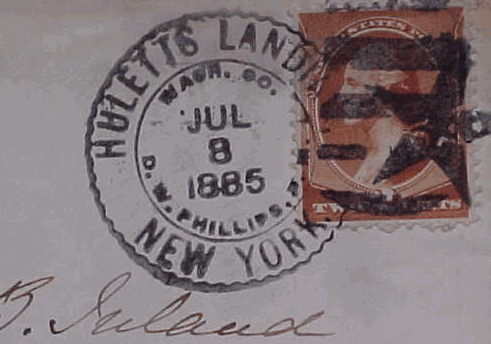
This week I had the great pleasure of interviewing Erin Hamlin, who has pre-qualified for the 2010 Olympic Games in Vancouver by virtue of winning the 2009 World Championship in Luge.
Erin hails from Remsen, N.Y. which is located near the western edge of the Adirondack Park. She is an impressive individual who we’ll be watching and rooting for as she competes in Vancouver in 2010.
Hamlin is headed to her second Winter Olympics after being the Gold medalist at the 41st World Championships in Luge. This will be her second Olympic berth, after finishing 12th in the 2006 Olympics in Torino, Italy.
She was in NY city with the USA luge team appearing on the Today Show after returning from Lillehammer, Norway, site of the 1994 Winter Olympics. Hamlin added a World Cup medal to her collection, winning the bronze on December 13th in Lillehammer.
Erin to begin, congratulations on your selection to the U.S. Olympic team. It is an honor to be able to interview you. The Luge is a not your ordinary sport. Can you tell us how you got interested in it and what it is like to be flying down the track flat on your back?
I didn’t really know much about the sport at all when I first started. USA Luge does a recruitment tour around the US every summer and I attended a clinic in Syracuse New York. From there I was invited to Lake Placid where I learned all the basics of how to slide and got to go down the track for the first time. It was a lot of fun and once they pulled me into the program my competitive side took over and I just wanted to go far in the sport and do well. Going down the track is an adrenaline rush you can’t get from anything else. Like a roller coaster (but faster!) and you are in control. It can be very challenging sometimes, but that makes it more satisfying when you make it down really well, really fast, and you know you have done well.
Erin, the Huletts Current has a number of young readers. Could you tell them what your daily training routine is like and how you managed training while you were in school?
During the off season (April-September) I spend at least 3 days a week in the weight room, focusing mainly on core and upper body strength work along with a variety of Olympic lifting (cleans, dead lift, jerk, snatch). On other days I do agility, medicine ball, and physio ball workouts, focusing mainly on balance, quickness and coordination. At least 2-3 hours a day is spent on strength and agility training with another 2 hours usually spent on sports specific exercises, including training on my start (we have an indoor refrigerated facility with a part of a luge track inside to practice on).
During the sliding season (October-March, roughly) we slide for at least 2 hours every day, sometimes two 2-hour sessions. It varies between training weeks and weeks that I race. I also continue to weight train three days a week, and the team usually plays some sort of game (volleyball, soccer, bandi-a form of floor hockey), or any other type of physical activity we can, often times agility workouts, on the days we are not in the weight room. Sliding and racing really takes the energy out of us, so the level of intensity of weight training sometimes drops a little bit during the racing season.
When I was still in high school I was very lucky to have very understanding and supportive teachers and staff members behind me. I managed to collect as much work as I could ahead of time and bring it along (we usually had a tutor with us on the junior team) and send it back as I finished it. There was always a little catch up to do at the end of the season when I would come back to school, and it was a lot of hard work. Being disciplined enough at 16 years old to do your homework with nobody to tell you to do it is sometimes a huge hurdle to get over!
You’re headed down the track at some very fast speeds. Can you tell our readers a little bit about the protection you wear in the event of a crash?
We don’t wear any extra padding actually. A helmet made out of kevlar (so its pretty light) and a shield over our face is the only real protection. Of course our entire bodies are covered, but with nothing that will help you out when you crash going 90mph! A spandex-like suit, small racing shoes that are actually made to keep your feet in a pointed position, gloves with spikes on the fingertips, and a layer of long underwear are the only things between my skin and the ice.
For our readers who are unfamiliar with the Luge, can you tell us what goes through your mind as you prepare for your run and what you are trying to do as you steer through the course? I know the idea is to get to the bottom in the fastest time but can you explain the strategy of accomplishing that?
On every track there is an idea ‘line’ to get down the smoothest and fastest. Our goal is to drive our sleds within one inch of that line the whole way down, at speeds around 90+ mph, while being completely relaxed at the same time. We have complete control over the sled the entire time, steering with our feet/legs, shoulders/body weight, and hands, which most people don’t know at first glance. So really when preparing for a run, it is best to focus on exactly what you have to do, but not think too hard. You have to be able to react quickly, because you are going so fast, but being relaxed is very important as well so I always try to not think too much in order to avoid psyching myself out, or making myself nervous. The sport is so much fun, so it’s always important to just chill and have a good time.
You train at the Olympic training center in Lake Placid. This may be a funny question but can people witness the Luge training there during the summer? If so, does the track have ice on it in the summer also? If not, how does it work?
We do most of our training at the training center yes, but most of it is not actual sliding. Because there is no ice, we spend our summers in the weight room, gymnasium, and an indoor facility we have in Lake Placid where we can practice our start. It is the very beginning piece of a track that is refrigerated year round. Our start is very important; it’s the only time during a luge run where we can propel ourselves down the track so it is crucial to our success. We do put wheels on our sleds and train on the track when is concrete just to have the feeling of sliding, even though it a little bit different. That you can probably come watch, since they have tours and wheeled bobsled rides at the track all summer. You can also tour both the Olympic Training Center and the Luge facility.
Finally, the readers of the Huletts Current will be rooting for you to accomplish your Olympic dreams in Vancouver in 2010. Please know that you have lots of friends in the Adirondacks who will be following your quest.
(Big Smile) I’ll be giving it my all!
To see a slideshow of Erin in action, check out the USA Luge site.










